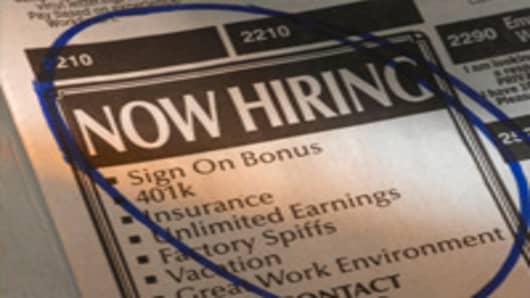Friday, forecasters expect the Labor Department to report the economy added 100,000 jobs in July, not enough to keep pace with growth in the working age population.
Most analysts see the unemployment rate steady at 8.2 percent, while a few see an increase. The wildcard is the number of adults actually working or seeking jobs—the measure of the labor force used to calculate the unemployment rate.
Adding adults on the sidelines, who say they would reenter the labor market if conditions improved, and part-time workers, who would prefer full-time positions, the unemployment rate becomes nearly 15 percent.
Adults who have quit looking and left the labor force altogether are responsible for 99 percent of the reduction in the unemployment rate from 10 percent since October 2009.
Many adults have reason to be discouraged—new jobs pay lower wages than did those lost during the recession and job openings remain scarce.
New policies favoring bank consolidation limit access credit for small and medium-sized businesses, and government health insurance mandates drive up the hiring costs. Together, those significantly discourage jobs creation in manufacturing and many service activities.
In the second quarter, the economy expanded at an anemic 1.5 percent annual pace and added only 75,000 jobs per month, as pessimism curbed consumer spending and the growing trade deficit continued to pull down demand for U.S. goods and services.
Longer term, the economy must grow 3 percent annually to keep unemployment steady, because advances in technology permit labor productivity to increase 2 percent each year and population growth pushes up the labor force about 1 percent.
The economy must add 13 million jobs over the next three years—361,000 jobs each month—to bring unemployment down to 6 percent. To accomplish that, GDP (explain this) would have to increase at a 4 to 5 percent pace. That would be possible after a long deep recession but for chronically weak demand for U.S. made goods and services.
The $600 billion trade deficit gap—driven almost entirely by imports of oil and consumer goods from China—is a major drag. Each dollar sent abroad that does not return to purchase U.S. exports is lost demand for U.S.-made goods and lost jobs.
The Congress and President have significantly curtailed production of oil offshore and in Alaska, and refused calls from economists across the ideological spectrum to act more forcefully to effectively pressure China to stop manipulating its currency, curb mercantilist import restrictions and export subsidies. Together, reversing those actions would create at least 5 million jobs.
Cutting the trade deficit in half would increase GDP, including multiplier effects, by some $500 billion and create 5 million jobs. However, without fundamental changes in banking, health care, energy and trade policies little progress may be expected.
Peter Morici is a professor at the Smith School of Business, University of Maryland, and former Chief Economist at the U.S. International Trade Commission.


